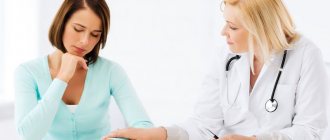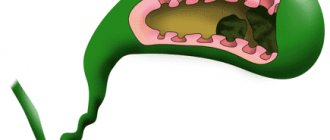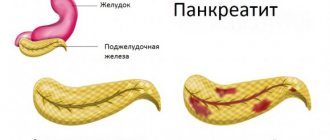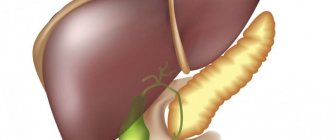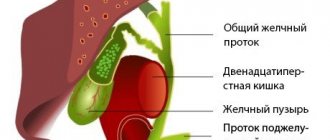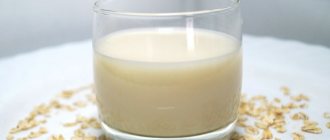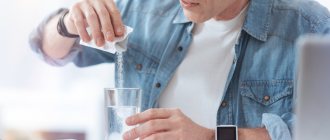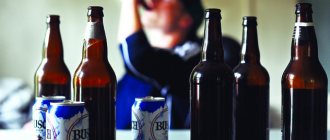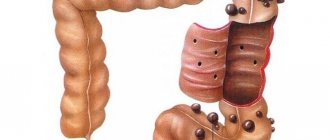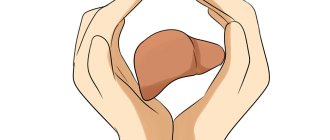What is cholecystitis
Cholecystitis or inflammation of the gallbladder is a disease that occurs due to an excess of bile or infection. Most often, the process is a consequence of an advanced form of gallstone disease.
The disease is particularly dangerous; if the symptoms are ignored and treated incorrectly, it can lead to very serious consequences, including death.
Diet for cholecystitis
An important factor in treatment is adherence to dietary nutrition. Each form of the disease has its own diet, but it is based on the principle of removing harmful foods from the diet.
Harmful products include:
- fried foods;
- fatty food;
- salty, sour or too sweet foods;
- fast food or convenience foods;
- alcohol;
- smoked meats;
- spicy or pickled foods;
- baking;
- coffee, strong tea, as well as drinks with gas and artificial colors;
- citrus and simply sour fruits;
- nuts and beans, which cause bloating.
Such products, when consumed regularly, have a negative effect even on a completely healthy person. In the presence of an inflammatory process, this food is on a par with toxic substances that must be avoided until the doctor allows you to return to your previous diet. But most often you have to adhere to dietary nutrition throughout your life, especially for the chronic form of pathology.
By following a diet, the chance of getting rid of the disease increases, so you should not deviate from it, even if you really want to. Health should come first.
There are several nutritional rules that you will need to adhere to during an exacerbation, or at the stage when the disease has temporarily subsided.
These nutritional rules include:
- adherence to a timed diet;
- eating foods only at a comfortable temperature, food should not be cold or too hot;
- food needs to be divided: it is better to eat more often, but in smaller portions;
- drink as much water or liquid as possible;
- give preference to those dishes that are not prohibited by the diet;
- It is not recommended to eat heavily at least 3 hours before bedtime.
Allowed foods include: lean meat, steamed or boiled dishes, vegetable or milk soups, cereals, fermented milk products, but with low fat content and unleavened, milk, weak tea, dried fruit compotes. It is also recommended to eat fruits and vegetables, but only those that do not contain coarse fiber.
You are allowed to supplement your diet with vitamins.
After some time, it will be possible to return to your previous diet, but this does not guarantee that the attack will not recur, so it is better to stick to the diet, even if it is not entirely strict, all the time.
Classification of inflammation
There are 2 types of disease, which, in turn, are divided into several categories.
Acute cholecystitis
It is characterized by sharp, unbearable pain radiating to the shoulder blade or shoulder. As a rule, this symptom appears the very first of all. In addition to severe pain, acute cholecystitis is characterized by the following symptoms:
- unpleasant metallic taste in the mouth;
- a sharp increase in body temperature up to 39 ° C (in critical cases, the temperature can rise even higher);
- vomiting after every meal or heavy drink;
- frequent nausea, belching with an unpleasant odor;
- cardiopalmus;
- weakness, lethargy;
- sharp pain on the right side of the ribs, aggravated by sudden movements;
- involuntary tension of the abdominal muscles.
This pathology occurs without complications and is easily treatable if you seek medical help in time.
In most cases, the acute course of the pathology is a consequence of advanced cholelithiasis.
In rare cases, acute cholecystitis can become chronic. This happens due to ignoring the disease or its improper treatment.
Chronic cholecystitis
Chronic cholecystitis may not manifest itself for a long time. It develops over several months. Many patients ignore weak signs of the disease for a long time and are not aware of their problem.
Weak symptoms are caused by the fact that inflammation of the gallbladder passes slowly, without sudden jumps. That is why doctors recommend undergoing a full medical examination once a year to identify hidden diseases.
Characteristic symptoms of chronic acute cholecystitis:
- frequent nagging aching pain in the right side, which can last for several hours and then disappear without a trace;
- dry mouth, most often occurring after waking up;
- bitterness under the tongue, unrelated to food intake;
- loose stools, diarrhea;
- unexpected attacks of nausea and vomiting unrelated to meals;
- frequent bloating.
The chronic stage can be complicated by an unhealthy lifestyle, frequent consumption of alcohol, fatty foods, etc. Bad habits aggravate the situation, provoking a more rapid development of the disease and the appearance of complications.
You can notice symptoms even with a sluggish course of the disease. However, they do not always occur in a hidden form: if there are stones in the gall bladder, the symptoms may be more acute and the pain may intensify.
During the period of exacerbation of the chronic stage, disruption of the gastrointestinal tract occurs, insomnia, heaviness in the right side, flatulence, etc. occur.
Acute and chronic cholecystitis is also divided into the following types:
- calculous - occurs with the formation of stones in the gall bladder, occurs in 80% of cases;
- acalculous – there are no stones in the gallbladder.
The calculous form of the disease most often occurs in patients over thirty years of age. In young people, acalculous cholecystitis predominates. This form of the disease is much easier, can be treated more quickly and does not cause complications.
The disease is also classified according to the nature of inflammation:
- Catarrhal is the mildest form of the disease. The clinical picture is blurred, but the outcome is usually favorable. In most cases, treatment is carried out with medication.
- Purulent - accumulation of pus in the bladder cavity, perforation of the bladder walls. The case requires immediate treatment, otherwise the outcome may be severe.
- Gangrenous – death of gallbladder tissue. One of the most severe forms of the disease. It mainly manifests itself in patients who ignore the disease.
- Phlegmonous - the formation of pus in the lumen of the gallbladder.
- Mixed. With this course of the disease, the patient may experience several of the above problems at once.
When making a diagnosis, a specialist uses several classifications at once to more accurately describe the problem.
Therapeutic measures
When chronic cholecystitis is detected, complex treatment is prescribed using medications, diet, and traditional medicine. In severe cases, surgery is performed.
Groups of prescribed drugs
There are several types of medications that are used for cholecystitis. Not all of them are necessarily prescribed by a doctor. The exact list of medications is determined by the attending doctor depending on the course of cholecystitis, the cause of its occurrence, and the presence of concomitant diseases.
Antibacterial
Antibiotics are used if the development of cholecystitis is caused by bacteria. Almost always, their use is indicated for acute cholecystitis, because it is with this that infection often occurs.
Such medications quickly penetrate into the bile. In addition, they have a wide spectrum of action.
Treatment of cholecystitis with them is carried out necessarily in courses, which cannot be disrupted or interrupted. The average duration of therapy is 5-10 days.
Antibiotics are prescribed only after determining the type of pathogen, since not all types are sensitive to a specific agent. If it turns out that the bacteria are resistant to the prescribed drug, the treatment will be ineffective.
Medicines such as Ampicillin, Cefotaxime, and Tsiprolet are often prescribed.
Sulfanilamide
It happens that a patient cannot take antibacterial agents due to some contraindications, for example, carrying a baby, breastfeeding a child, liver failure, etc. In this case, sulfonamides come into play in the fight against infections. This could be “Sulfapyridazine”, “Sulfadimethoxine”.
Choleretic
This group of drugs is divided into two types:
- choleretics, which are designed to stimulate the production of bile substances;
- cholekinetics, responsible for the procedure for removing bile from the body.
These pills should not be taken on your own without a doctor's prescription. They are used if the liver does not excrete bile well, or the motility of the biliary tract is significantly impaired.
It is strictly forbidden to take choleretic drugs for cholecystitis in cholelithiasis, that is, when there are large stones in the biliary system. Otherwise, they will provoke their movement, as a result of which the stones can clog the ducts, causing severe pain. In this case, urgent medical assistance will be required.
The most effective drugs in this group are “Allohol”, “Digestal”, “Nicodin”.
Antispasmodic
This group is used to relieve spasms of the gallbladder walls, which allows you to get rid of pain. They not only help cope with pain, but also:
- have an anti-inflammatory effect;
- normalize the movement of bile;
- stabilize the tone of the gallbladder.
Among the frequently used ones are “Odeston”, “Olimetin”, “Meteospasmil”.
Enzymatic
Such drugs are prescribed to improve the production of enzymes, the functioning of the pancreas, gall bladder, and also to normalize the general condition of the digestive system. Frequently used products in this group: “Mezim”, “Creon”, “Pancreatin”.
If the patient does not have any disruptions in the gastrointestinal tract, the doctor may prescribe combined enzyme medications.
Antifungal
If the patient has been prescribed antibacterial drugs, in addition it is recommended to take drugs against fungal infections. The fact is that due to the use of antibiotics, the functioning of the immune system is reduced, which leads to increased division of fungi.
Often, after completing an antibacterial course, patients encounter fungal diseases, for example, candidiasis of the mucous membranes. To avoid this, antifungal medications are used.
Popular among them are Nystatin and Metronidazole. They have a gentle effect and increase the activity of beneficial bacteria.
Hepatoprotective
To normalize the outflow of bile substances, doctors prescribe hepatoprotectors that activate the functioning of the liver. Also, these products help restore liver cells and protect them from external factors.
The following medications of this group are popular: “Essentiale”, “Gepabene”, “Phosphogliv”.
ethnoscience
For cholecystitis, home remedies can be used as an additional treatment. There are a huge number of them. You can use the following recipes:
- Grind the horseradish root to make a glass. Pour the resulting raw material with 4 cups of boiling water, let it brew for 2 days, putting it in the refrigerator. Then strain and take 50 ml three times a day on an empty stomach. Before use, it is important to warm the product so that it is at room temperature.
- Wash the rowan berries, pour boiling water over them, cool and squeeze the juice out of them. Mix the resulting liquid with honey in a ratio of 2 to 1. Drink a quarter glass once a day.
- Combine 2 tablespoons of kidney tea, hops, chamomile and mint. Separate 3 tablespoons of the mixture, brew with a liter of boiling water, and leave to steep for a couple of hours. Take 100 ml 4-5 times a day.
Before using any folk remedy, it is important to consult with your doctor.
Nutrition correction
Diet is the most important component of gallbladder treatment. After all, poor nutrition often leads to the development of inflammation in the gallbladder. Many foods contribute to the occurrence of chronic cholecystitis, especially foods enriched with animal fats.
The following should be removed from the diet:
- smoked meats;
- semi-finished products;
- fatty, spicy, fried foods;
- confectionery and flour products;
- sausages;
- canned food;
- fast food;
- strong coffee;
- alcoholic and carbonated drinks.
The menu must include foods that promote the movement of bile and help reduce the inflammatory process. For example, cauliflower, beets, celery.
The menu should contain more vegetables, fruits, and herbs. You can eat meat and fish, but it is important that they are not fatty.
You should eat food in small portions - 5-6 times a day in small portions.
Surgical intervention
If drug treatment does not help cope with cholecystitis, an operation called cholecystectomy is performed. During this process, the doctor completely removes the gallbladder, after which the person recovers.
Removal is performed open or laparoscopically. The choice depends on the condition of the patient, how severe and how long the cholecystitis lasts.
The laparoscopic method is the most preferred because it involves less trauma. After it, a person recovers quickly, and the risk of complications is reduced to zero.
Causes of gallbladder inflammation
What causes the gallbladder to become inflamed? The main and most common cause of the development of the disease are microbes that enter the body - streptococci, E. coli, enterococci, staphylococci. Also, the reasons that provoke the occurrence of cholecystitis include:
- congenital anomaly of the gallbladder;
- prolapse of abdominal organs;
- biliary dyskinesia;
- cholelithiasis;
- worms;
- alcoholism;
- binge eating;
- unbalanced, unhealthy diet, consumption of large quantities of spicy and fatty foods;
- chronic diseases: diabetes, gastritis, pancreatitis, thyroid diseases, etc.;
- allergy;
- gallbladder injury;
- hereditary factor;
- severe shaking of the body, injuries - parachute jumping, rides, etc.
Sometimes cholecystitis can occur in women during pregnancy.
First aid for an acute attack
The attack occurs suddenly, but usually it occurs some time after eating, especially if a lot of fatty or spicy foods were consumed. In this case, it is necessary to relieve severe symptoms as soon as possible and call an ambulance, since it will be extremely difficult for the patient to get to the hospital on their own.
After calling the doctor, you should put a cool compress on the patient’s abdominal cavity; at this time it is better for him to be in a supine position.
In case of severe pain attacks, the use of painkillers is allowed, including No-shpa, Papaverine or the most common Analgin. If the attacks of nausea do not go away, you should drink pure still water or tea with mint.
If the vomiting does not stop, it is better to collect a certain amount of mass so that the doctor can examine it. It is important to drink as much clean, cool water as possible to flush out your stomach.
Symptoms of cholecystitis
The main symptom of the disease is pain under the ribs on the right side. The pain worsens when changing body position or active physical activities. It can radiate to the right shoulder, shoulder blade, neck.
The pain may be intermittent and almost completely subside for some time on its own or after taking a pain reliever.
The following symptoms are most common in patients with cholecystitis:
- dull pain on the right side of the body above the waist;
- lack of appetite;
- digestive problems - frequent alternation between constipation and diarrhea;
- nausea, vomiting;
- bitterness in the mouth;
- chills;
- yellowness of the skin;
- violation of gas formation;
- heaviness in the right hypochondrium;
- belching with a bitter taste;
- dark stool with droplets of fat;
- urine becomes dark brown;
- flatulence;
- headache;
- swelling of the right side;
- temporary increase in body temperature;
- general weakness
- heart failure - shortness of breath, severe cough in sleep.
Means for dissolving stones
The presence of stones in the gallbladder or its ducts is characteristic of calculous cholecystitis. This disease requires the prescription and use of drugs that help dissolve the formed stones. Symptoms of calculous cholecystitis are supplemented by colic. This manifestation is due to the stone blocking the neck of the gallbladder. This also disrupts the normal flow of bile.
Medicines for dissolving stones in the gallbladder and ducts are used under the following conditions:
- stones are made of cholesterol;
- dimensions less than 5 mm;
- the age of the stones is no more than 3 years;
- the patient is not obese.
Such drugs are taken in dosage according to body weight. In the absence of indications for surgical intervention, treatment is carried out with drugs containing ursodeoxycholic acid. This substance dissolves cholesterol stones. Such medications need to be taken for a long time - from six months or longer.
Diagnosis of gallbladder inflammation
If you suspect cholecystitis, you should seek medical help. The doctor will conduct an initial examination, listen to complaints, find out where it hurts, and palpate the stomach for pain and other abnormalities. Next, to make an accurate diagnosis, the patient is sent for examination, which includes the following diagnostic measures:
- Ultrasound;
- hemogram;
- probing with taking a bile sample;
- Analysis of urine;
- ultrasonography;
- bile culture;
- cholecystography;
- laparoscopic examination.
Based on the tests and results received, the doctor will be able to make an accurate diagnosis and prescribe the necessary treatment.
The importance of diet
Treatment of the acute phase of the disease in a woman includes a starvation diet. Temporary refusal to eat allows you to prepare for surgery and avoid stomach contents from entering the respiratory tract. After surgery, nutrition is resumed on the same or the next day. It is based on certain principles:
- increasing the frequency of meals (up to 5) and reducing the size of one serving;
- proper thermal and mechanical processing of products;
- reducing the proportion of fats and carbohydrates and increasing proteins in the diet;
- sufficient amount of vitamins and microelements;
- drinking 1.5-2 liters of liquid per day;
- energy value corresponds to the age norm of a woman.
At the first signs of acute cholecystitis in a woman, diet does not affect the further progression of the disease. But in the chronic form, its violation provokes another relapse.
Treatment of cholecystitis
Treatment of the disease is divided into the following methods:
- Traditional drug therapy.
- Ethnoscience. Is it possible to cure a disease with herbal infusions? No, but thanks to them you can alleviate general symptoms. This method of treatment should be approached with extreme caution so as not to aggravate the course of the disease.
- Physiotherapy and tubing (prescribed by the attending physician).
- Surgical intervention. This treatment is used only in emergency cases when the above methods do not give positive results.
How to treat and what direction of therapy to choose is decided by the attending physician based on the severity of the disease and its course. You can use one type of treatment or several to achieve the best result.
You should not self-medicate. Cholecystitis is a dangerous disease that requires supervision by an experienced specialist. All drugs and procedures should be prescribed after a thorough examination of the patient.
Typically, cholecystitis is treated in stages, including several steps:
- Prescribing a special diet - your doctor will recommend a list of foods that you should exclude from your diet. Eating a healthy diet will help reduce stress on the body and relieve symptoms.
- Taking an antibiotic or other medications necessary to eliminate inflammation.
- Symptomatic treatment , i.e. elimination of symptoms of the disease.
- Physiotherapy, adherence to regimen . These procedures are necessary to maintain immunity and prevent relapse.
Treatment of cholecystitis in children and pregnant women
Treatment of childhood cholecystitis is carried out using the same methods as in adults. The diet must be adjusted and medications prescribed. The attending physician selects the drugs and their dosage, taking into account the patient’s age, since many drugs have age restrictions.
As for pregnant women, the doctor is even more attentive to the choice of medications. Most medications are prohibited from being used while pregnant, so nothing should be taken without the knowledge of a specialist.
Otherwise, expectant mothers are also advised to diet. Also, if the gallbladder begins to become inflamed, it is recommended to treat with mineral waters.
Possible complications
If you do not seek medical help in a timely manner or receive improper treatment, the disease can provoke a number of unpleasant and dangerous complications for a person. These include:
- filling the bladder cavity with pus;
- dropsy – the gallbladder fills with a large amount of fluid and is disconnected from the biliary system;
- necrosis - death of cells in the walls of the gallbladder;
- formation of a fistula - the entire contents of the bladder enter the abdominal cavity;
- complete failure of the bladder - the organ does not perform its functions;
- pericholecystitis – inflammation spreads to nearby organs;
- blockage of the bile ducts;
- secondary billiard cirrhosis;
- gallbladder tumor, cancer;
- pancreatitis and pancreatic necrosis.
If assistance is not provided in a timely manner, a huge number of diseases may occur, including perforation of an overstretched gallbladder with the further development of peritonitis.
In its most severe forms, the disease can be fatal.
An attack of cholecystitis and how to stop it
An attack of pathology occurs due to various factors:
- Presence of infection in the bile ducts.
- Stomach diseases that lead to disruption of the movement of bile.
- Obstruction of blood vessels in the biliary tract as a result of atherosclerosis.
- Cholelithiasis.
With multiple repetitions of attacks, the disease is classified as chronic. This form can occur in the presence of gallstones and in their absence. The pathology can develop slowly and imperceptibly over a long period of time - from several months to several years, but can appear immediately due to the acute stage of cholecystitis.
An attack of acute cholecystitis has acute symptoms and is always sudden.
At home, if an attack of acute cholecystitis occurs, the following recommendations should be followed:
- Provide the patient with complete rest.
- Apply a cold compress to the area of severe pain.
- Drink an antispasmodic to relieve pain (“No-shpa”).
- After vomiting attacks, take mineral water without gas on a bicarbonate, sodium chloride basis.
- Call an ambulance.
It is strictly prohibited:
- drink alcoholic beverages;
- do enemas;
- place a hot heating pad on the abdominal area.
